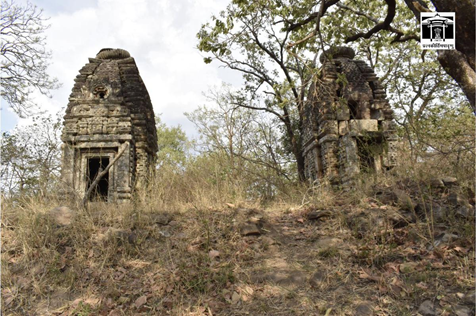

Context
The Archaeological Survey of India (ASI) has reported 20 Buddhist caves, ranging from the 2nd Century BC to 5th Century BC, at Madhya Pradesh’s Bandhavgarh Tiger Reserve.
About
- The Buddhist religious artefacts found in the region of Baghelkhand are of the Mahayana sect of Buddhism.
- This is also the first time Bandhavgarh has been explored since archaeologist NP Chakravarti last explored it in 1938.
- Key Findings: Some of the key findings are
- board games
- monolith depicting the ten avatars of Vishnu
- a votive stupa
- two Saiva Math belonging to the Kalachuri period
- chaitya-shaped doors, coins, stampage and as many as 46 new sculptures which were never seen before
- Fragments of a Buddhist pillar dating to the 2nd or 3rd Century BC were found at the site as well
- Over 24 Brahmi inscriptions, dating to 2nd Century to 5th Century BC, were also found.
- The inscriptions mention sites such as Mathura and Kaushambi, and Pavata, Vejabharada and Sapatanaairikaa.
- The kings they mention include Bhimsena, Pothasiri and Bhattadeva.
- Also part of the findings is 26 ancient temples and remains from the Kalachuri period.
- The team also found evidence of 19 water bodies.
- Remains of the Gupta period, such as door jambs and carvings from 4th to 5th century BC were documented during the exploration.
|
The Kalachuri dynasty, which spread over parts of Gujarat, Maharashtra and Madhya Pradesh, is also associated with the earliest Ellora and Elephanta cave monuments. |

About Bandhavgarh Tiger Reserve:
- Bandhavgarh National Park is located in the Umaria district of Madhya Pradesh.
- Bandhavgarh was declared a national park in 1968 and then became Tiger Reserve in 1993.
- Historical Significance: Its mention can be found in the ancient books of the ‘Narad Pancharatra’and the ‘Shiv Purana’ that this place is being associated with Ramayana.
- The park derives its name from the most prominent hillock of the area, which was said to be given by Hindu Lord Rama to his brother Lakshmana to keep a watch on Lanka. Hence the name Bandhavgarh (Sanskrit: Brother's Fort).
- The Bandhavgarh Fort is a great masterpiece of “Treta Yuga” (one of the ages of mankind in Hinduism).
- It was ruled by major dynasties including Sengars, the Kalchuris, and the Baghels(believed to rule the regions for the longer period).
|
About Archaeological Survey of India (ASI):
|



